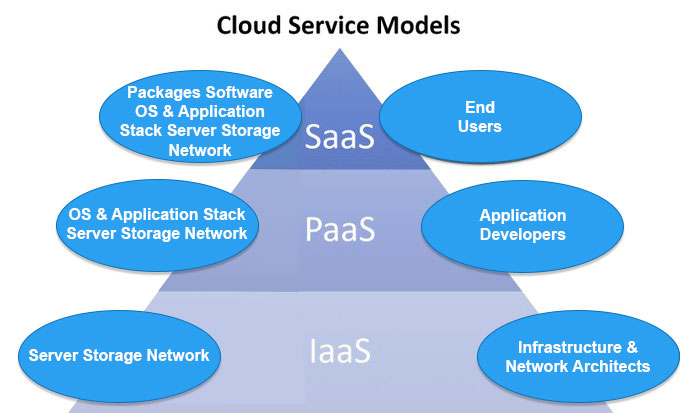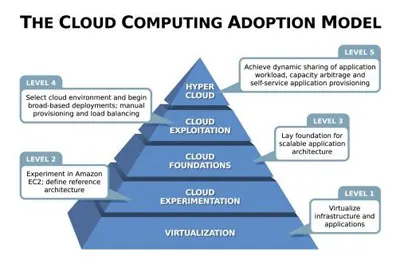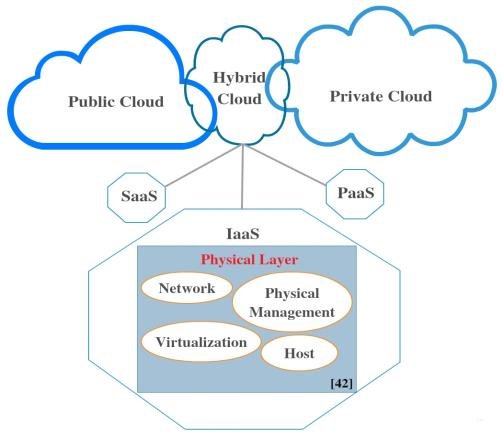Cloud infrastructure
Cloud infrastructure is the collection of hardware and software resources that make up the cloud. Cloud providers maintain global data centers with thousands of IT infrastructure components like servers, physical storage devices, and networking equipment. They configure the physical devices using all types of operating system configurations. They also install other types of software that are required for an application to run. Your organization can lease the cloud infrastructure in a pay-as-you-go manner, which helps you save significantly on the cost of purchasing and maintaining individual components.

Components of cloud infrastructure
Each cloud hardware and software component helps developers to provision virtual resources and deploy workloads in the cloud. There are many different types of cloud services that abstract the technicalities of cloud computing at varying levels. The following components make cloud deployment more effortless. Servers : Servers are powerful computers installed by a cloud service provider across different data centers. Each server might be powered by several processor cores and large memory storage, giving them robust computational capabilities. Cloud providers use groups of interconnected servers to provide a wide range of cloud computing services. Networking: Networking is the cloud's capability to connect different data storage, applications, microservices, and other workloads across different servers and data centers. To enable cloud connectivity, cloud providers use networking equipment—such as load balancers and network switches—so you can establish communication channels and manage traffic in the cloud environment. Meanwhile, developers use load balancing to reduce network latency and improve application performance when traffic demand grows. Storage: Storage is persistent data space hosted on a physical architecture to store cloud workloads. You can connect to cloud storage on any device with internet accessibility. Cloud storage is scalable, and you can expand its size, regional availability, and type as required. For example, developers prefer block storage for cloud applications that require ultra-fast read/write performance. Software: You access a cloud infrastructure's virtualized resources through software with a graphical user interface. Developers use virtual machines (VMs), analytics, data management tools, and more to simplify cloud usage.
Delivery models in cloud architecture
Cloud architecture refers to the usage of distributed computing resources to run web applications at scale. It helps organizations pursue their cloud strategies with several cloud infrastructure delivery models. Software as a service Software as a service (SaaS) is a popular cloud computing service that allows users to access software from their browsers. Developers build web applications and deploy them on the cloud infrastructure. Then, they allow users to subscribe to the app and charge a fee in return. Because SaaS is fully managed by developers, users don't have to update or troubleshoot the application if they encounter issues. By using SaaS, users don't need to download and install applications on their devices. Rather, subscribing to a SaaS gives you the flexibility to manage software expenses and avoid purchasing individual licenses. Platform as a service
Platform as a service (PaaS) is a cloud computing model that provides developers with the resources they need to build, test, and deploy applications. Instead of handling software development frameworks, database integrations, containerization, and other software requirements, developers subscribe to PaaS. The cloud provider takes care of the development environment so developers can devote their attention to building the application. Moreover, software teams can work more collaboratively with a PaaS compared to consolidating codes on multiple computers. Infrastructure as a service Infrastructure as a Service (IaaS) provides organizations with the full spectrum of cloud computing infrastructure as a pay-to-use service. It includes access to cloud servers, data storage, networking tools, operating systems, and services owned by an external cloud provider. On top of these building blocks of cloud computing, providers might also offer services like serverless architectures, short message service (SMS), and DNS. By using IaaS, organizations have complete control of the entire stack of technologies that make up a physical cloud architecture.
cloud infrastructure adoption models
Organizations use cloud infrastructure to extend their software use cases beyond traditional computing environments. They choose different cloud infrastructure options to meet their operational requirements. Public cloud The public cloud model allows organizations to access cloud computing capabilities in a multi-tenant arrangement. Instead of owning the underlying infrastructure, you rent cloud infrastructure from third-party service providers. Public cloud services provide companies with several options to access infrastructure. You can pay more for dedicated physical infrastructure that's fully managed by the provider but accessible and usable only by your organization. Alternatively, you can also choose a cost-friendly option to access shared physical resources as fully isolated virtual environments. You can enjoy the elasticity, recoverability, and availability that public cloud providers offer at very low costs. Private cloud A private cloud is a physical infrastructure owned and managed by a single organization. Organizations set up on-premises cloud environments in their data centers. Unlike the public cloud, they don't share underlying physical resources with other users. Organizations are responsible for provisioning, managing, and maintaining all hardware and software components of a private cloud architecture. Moreover, the cost of setting up and expanding private cloud environments is comparatively higher than the public cloud. Therefore, some organizations use a managed private cloud service to host their internal workloads. Hybrid cloud The hybrid cloud model allows an organization to use both private and public clouds simultaneously. You can use a public cloud to access and share resources from different geographical locations. Meanwhile, a private cloud provides a self-managed infrastructure for storing sensitive data in an isolated environment.
